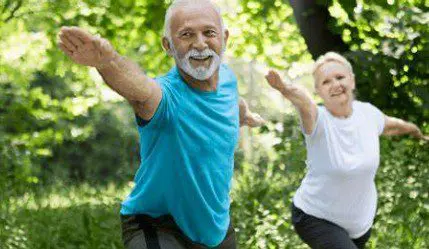
Just over 70% of our patients state that they are able to achieve their desired level of sport again after joint replacement.
After a knee or hip replacement, returning to exercise is an important step for your health and quality of life. With the right approach and suitable sports, you can gently become active and enjoy exercise again. Most of our patients can ski, cycle, play golf, swim or go hiking without any problems.
More intensive sports such as playing tennis or climbing are often also possible. However, some residual discomfort and swelling may occur after heavy exertion. Sports with high impact loads such as jogging are not necessarily ideal, as they can lead to increased wear of the prosthesis.
Here are some joint-friendly sports that are suitable for starting out after rehabilitation:
1. walking and hiking
Why is it suitable?
Walking is a natural and gentle movement that mobilizes the joint and strengthens the muscles. It is ideal for building confidence in the new prosthesis step by step.
Tip: Start with short walks on level ground and slowly increase the duration. You should only consider walking on uneven terrain later. Use walking poles to help you.
2. cycling (ergometer and outdoor)
Why is it suitable?
Cycling is easy on the joints and strengthens the leg muscles without overloading the joint. The controlled range of motion supports the mobility of the joint.
Tip: Start on a stationary ergometer before moving outdoors. Make sure the intensity is moderate and the seat height is comfortable.
3. swimming and aqua gymnastics
Why is it suitable?
Water relieves pressure on the joints, while the resistance to movement strengthens the muscles. Swimming and aqua gymnastics are ideal for improving joint function and gently exercising the body.
Tip: Hips and knees are often twisted during breaststroke. This should only be done if it is absolutely pain-free. The crawl or backstroke are more suitable.
4. nordic walking
Why is it suitable?
Using the poles distributes the weight evenly between the arms and legs, which relieves the joints. The exercise also strengthens the entire musculature and promotes fitness.
Tip: Learn the correct technique to avoid putting strain on the joint through incorrect movement patterns.
5. yoga and pilates
Why is it suitable?
Gentle movements and stretching exercises promote flexibility and improve the stability of the muscles around the joint. Balance and body awareness are also trained.
Tip: Choose exercises that are easy on the joints and avoid extreme stretches or strains. Kneeling is often problematic at the beginning, so use a cushion and a yoga block.
Together with our physiotherapists, we will be happy to help you create an individual exercise program that is optimally tailored to your needs